Awareness is the Key
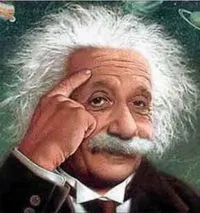
In his clip from “Super Soul Sunday,” Deepak
Chopra explains why meditation has nothing to do with religion.
“Meditation is, first of all, part of every spiritual
tradition... in the world,” he says. “There are
breathing meditations in every tradition. There are body-awareness
meditations in every tradition. And there are variations
of mantra meditation. It has nothing to do with belief or
ideology or doctrine. It’s a simple mental technique
to go to the source of thought.”Deepak Chopra
| "The mind is like a pond. On the surface you see
all the disturbances, yet the surface is only a fraction
of the pond. It is in the depth below the surface, where
there is stillness, that you will come to know the true
essence of the pond, as well as your own mind. " |
"There is, however, a place outside this craziness: a way
to see what’s actually going on and to learn who you
really are, and meditation is one way to find it out for
yourself. From that place of stillness it’s possible
to help yourself to help others,and to understand ones beliefs
completely."
Michael W. Taft

You Can Be
a Light Unto Yourself...
To be aware is to watch your bodily activity, the
way you walk, the way you sit, the movements
of your hands: it is to hear the words you use, to observe all your thoughts,
all your emotions, all your reactions.
It includes awareness of the unconscious, with its traditions,its instinctual
knowledge, and the immense sorrow it has accumulated— not only personal
sorrow, but the sorrow of man.
You have to be aware of all that; and you cannot be aware of it if you are
merely judging,evaluating, saying," This is good and that is bad, this I will keep and that I will reject," all
of which only makes the mind dull, insensitive.JK
"Whats the difference between Concentration
and Awarenes : Awareness has no center" |

Throughout
the ages humankind has searched for new means to reach
higher
levels of consciousness. Most of this exploration has
been shrouded in the occult and sought through spiritual
or mystical experimentation. With the advent of the
technological age science has joined the quest for
the Holy Grail of expanded experience. This state of
awareness has been sought in all cultures and described
in the ancient eastern teachings as Nirvana, the state
of bliss. The scientific exploration of this field
has developed through psychology, studying human behavior
and psyche, sensory deprivation with John Lily’s
floatation tank, the psychedelic days with Tim Learny
and friends, and finally to the most recent and technologically
advanced form Yet,electronic NIRVANA

"Awareness, the silent choicless observation
of what is"
1. What is meditation?
The basic idea generally associated with why people meditate is that during
our day we are constantly subjected to sensory input and our minds are always
active in the process of thinking. We read the newspaper, study books, write
reports, engage in conversation, solve problems, etc etc.
Awareness is the Key
Typically, as we do these normal activities we engage in
a constant mental commentary, sort of an inner "The
Drama of Me." Usually people aren't fully aware of all
the mental thought activity that we are constantly engaged
in. Meditation allows all this activity to settle down, and
often results in the mind becoming more peaceful, calm and
focused.
In essence, meditation allows the awareness to become 'rejuvenated'.
Meditation can be considered a technique,
or practice. It usually involves concentrating on an object,
such as a flower, a candle, a sound or word, or
the breath. Over time, the number of random thoughts occurring
diminishes. More importantly, your attachment to
these thoughts, and your identification with them, progressively
become less. The meditation subject may get caught up in
a thought pattern, but once he/she
becomes aware of this, attention is gently brought back
to the object of concentration. Meditation can also be
objectless, for example consisting of just sitting.

Experiences
during meditation probably vary significantly from one individual
to another, or at least if different
techniques are involved.
Relaxation, increased awareness, mental focus and clarity, and a sense of peace
are the most common by-products of meditation.
While much has been written about the benefits of meditation, the best attitude
is not to have any expectations when practicing.
Having a sense of expectation of (positive) results is likely to create unnecessary
strain in the practice.
As well, since meditation involves becoming more aware and
more sensitive to what is within you, facing unpleasant parts
of oneself may well be part of meditation.
Regardless of the experience, the meditation subject should try to be aware
of the experience and of any attachment to it.
Failure to experience silence, peace of mind, mental clarity, bliss, or other
promoted benefit of meditation is not in itself a sign of incorrect practice
or that one can't concentrate properly or concentrate enough to be good at
meditation.
| When Oprah had meditation taught
to students at the Oprah Winfrey Leadership Academy for
Girls—South Africa,
she says, she received pushback from parents who thought
meditation was a religious practice. Watch as Deepak
Chopra explains why meditation has nothing to do with
religious belief or doctrine. Source |
Whether one experiences peace or bliss is not what is important.
What is generally considered important in meditation is that one
is regular with their meditation -every day- and that one makes a reasonable
effort, but not strain, to remain with the object of attention during the practice.
With regular practice one inevitably acquires an increased understanding of
and proficiency with the particular meditation technique.

Some people use the formal concentrative meditation as a preliminary
step to practicing a mindfulness meditation during the day
where one tries to maintain a calm but increased awareness
of one's thoughts and actions during the day.
For some people, meditation is primarily a spiritual practice,
and in some cases the meditation practice may be closely tied
to the practice of a religion such as, for example, Hinduism
or Buddhism.
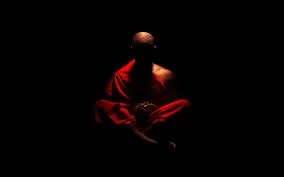
3. How is meditation different
from relaxation, thinking, concentration or self-hypnosis?
Relaxation: Relaxation is a common by-product of
meditation. Relaxation itself can assume many forms, such as taking
a hot bath or reclining in the Lazy-boy and watching tv, etc.
Meditation is an active process where the meditation subject remains fully
aware of what the awareness is doing. It also attempts to transcend
the thought process whereas many forms of relaxation still engage the thought
process. Meditation allows the body to relax and can offset the effects of
stress both mentally and physically to a potentially much greater degree than
passive relaxation.

Thinking: Thoughts generally consume energy
in the process of their formation. Constant thought-activity,
especially of random nature, can tire the mind and even bring
on headache. Meditation attempts to transcend this crude level
of thought activity. Through regular practice one becomes aware
that they are not their thoughts but that there is an awareness
that exists independent of thought.
Concentration: Meditation begins with concentration,
but after an initial period of concentration, thought activity
decreases and keeping the awareness focused becomes more spontaneous.
At this point the person may or may not continue to employ
the object of concentration.
Self-hypnosis: Self-hypnosis, like meditation,
involves at least an initial period of concentration on an
object. However in hypnosis one does not try to maintain an
awareness of the here-and-now, or to stay conscious of the
process. Instead one essentially enters a sort of semi-conscious
trance.

4. What are the different meditation techniques?
Meditation involves concentrating on something to take our attention beyond
the random thought activity that is usually going on in our heads. This can
involve a solid object or picture, a mantra, breath, guided visualization, CES...

Typical objects employed include a candle
flame or a flower.
Some people use pictures, such as a mandala - a highly colored
symmetric painting - or a picture of a spiritual teacher in
a high meditative state. Mantras are sounds which have a flowing,
meditative quality and may be repeated out loud or inwardly.
The breath is also a common focal point. Finally, guided visualization
is also considered by some to be a form of meditation.
Who wants to worship by the light of one candle,
when he can have the sun? JK
A guided visualization can help to bring one into a meditative state; also,
visualization may be used once a meditative state has been reached to produce
various results.

5. Which meditation is right for me?
There is no "right" meditation technique for everybody.
Some techniques work better for certain people while other techniques
work better for other people. The important thing is to find what
works for you.
| One of the types of meditation used by a lot of people
is the chakra meditation. Chakra is derived from a Sanskrit
word, which means “circle” or “vortex”.
Chakras are energy centers or energy openings residing
in our body that control the flow and distribution of energy.
It is said that an imbalance in one of the chakras may
result to problems in an individual’s physical, mental,
and emotional well-being. Chakra meditation is helpful
in that it focuses on maintaining and restoring balance
to these energy centers inside the body. In this type of
meditation, individuals are introduced to the importance
of interconnections of the chakras and the roles each one
play in maintaining our health see more here |
6. What are some meditation guidelines?
• There are a few recommended guidelines for meditation:
• It should be done every day, preferably at the same time
• It should preferably be done before a meal rather than after a meal
• A spot should be set aside for meditation, which should be a quiet place
and used for nothing but meditation
One should sit with the spine straight and vertical (a chair is ok to use)

7. Is there any religious implication or affiliation
with meditation?
Meditation has been and still is a central practice in eastern religions, for
contacting "God" or one's higher Self. Christianity also has semblances
of meditation, such as the biblical statement "The kingdom of heaven is
within you". Churches have a meditative atmosphere.
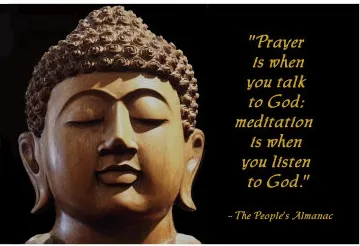
Meditation deals with contacting something within
us that is peaceful, calm, rejuvenating, and meaningful.
Whether one calls this
something "God" or "soul" or " the inner child" or "theta-wave
activity" or "peace" or "silence" is not important.
It is there and anyone can benefit from it regardless of what they believe.

Most people in the world have already meditated.
If you have relaxed looking at a beautiful sunset, allowing
your thoughts to quiet down, this is close
to meditation. If you have been reading a book for awhile, then put it down
to take a break and just sat there quietly and peacefully for a few minutes
without thinking, this is close to meditation.
8. Does meditation have any ethical implications?
In many traditions meditation practice is a means for reinforcing ethical qualities.
In these traditions, calmness of mind,
peacefulness and happiness are possible in meditation and in life generally
only if they are accompanied by the observance of ethical norms of behavior.
| " Psychic abilties are a
waking
dream.Your “ability to be psychic” is literally,
your ability to relax, to receive guidance." |
9. What is the best time of day to meditate?
While meditation is beneficial at any time, most people who meditate
agree that early morning is the best time to meditate.
Part of the reason is that it is said that in early morning the hustle-and-bustle
of the world has not yet begun and so it is easier to establish a meditative
atmosphere.
Having an early morning meditation also lets us carry some of the energy
and peace of the meditation into our daily activities.
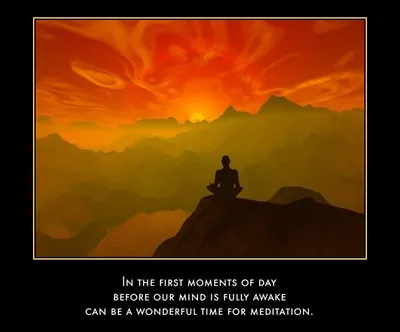
Many people also meditate either before dinner or later in
the evening. Others also meditate at noon. A short meditation
at these times allows one to throw off some of the accumulated
stress of the work-day and become rejuvenated for further activity.
An important consideration is when your schedule will allow you to meditate.
Having a time of the day set aside for meditation helps in maintaining regularity
10. Why do some people use CES cranial
electro stimulation?
CES can help in establishing
a meditative atmosphere very quickly. Also, some people find meditation
relatively easy but find that the hard thing is
to actually get themselves to sit down and start their meditation. CES can
help make this easier. Some people use music with their CES tools.
Most people find CES give
a deeper meditative state….
11. Should I meditate with my eyes open or with my eyes closed?
Different traditions give different answers. Closing your eyes
may contribute to drowsiness and sleepiness--if that's the case
for you then try opening them a little. Opening your eyes may
be distracting. If that's the case try closing your eyes or
direct
your gaze on a blank wall
(Zen-style).
Or try with the eyes open halfway or a bit more, the gaze unfocussed
and directed downward,but keeping the head erect with the chin
slightly tucked
in.
Sometimes meditation subjects experience headaches from focusing on a
spot too close to the eyes (perhaps closer than three feet). Whether
focused or unfocussed, the gaze should be relaxed in order to prevent
eyestrain
or headache.
Experiment and see what works for you and then stick with your
choice of technique. If you are using a candle, flower, or other
visual object in your meditation then here the technique itself
requires your eyes to be at least partly open.

12. What are the physiological effects of meditation?
The most common physiological effects of meditation are reduced blood
pressure, lower pulse rate, decreased metabolic rate and changes in
the concentration
of serum levels of various substances…
"Whatever
you are doing. For example, right now you are writing.
You
can write in two ways. The ordinary way that you always
write. You can try another method: you can write it and
you can also inside witness that you are writing it.
First, watch your actions of the body.
Second, watch your actions of the mind: thoughts,
imaginations.
Third, watch your actions of the heart: feelings,
love, hate, moods, sadness, happiness.
And if you can succeed in watching all these three,
and as your witnessing grows deeper and deeper, a moment
comes that there is only witnessing but nothing to
witness. The mind is empty, the heart is empty, the
body is relaxed.
In that moment happens something like a quantum
leap. Your whole witnessing jumps upon itself. It
witnesses
itself, because there is nothing else to witness. And
this is the revolution which I call enlightenment,
self-realization. Or you can give it any name, but
this is the ultimate experience of bliss." |
BALANCE IS THE KEY to
mastery in a human being. Meditation is the foremost technique
for achieving balance and addressing the challenge of human
mastery. Throughout history, such mastery was the result of
many years of arduous training and hours-a-day spent in isolated
meditative practice. In our contemporary Western society, very
few of us devote our time to create such a disciplined and
rigorous lifestyle.
Yet, the desire to move beyond our boundaries, to explore the nature of transcendental
experience and to witness the peace which lies at the heart of our being is
natural to human beings in all times and all cultures.
As Westerners, we seek a more efficient way, a method
that is congruent with our fast-paced lifestyle and non-traditional belief
system. We have found the most effective method available today for achieving
balance and addressing the challenge of human mastery are CES tools.
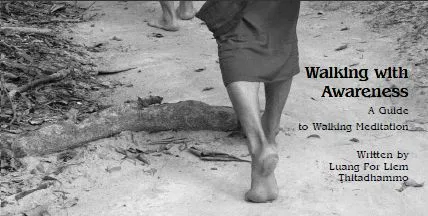
13. When I meditate I experience physical pain in my body. What
should I do?
Sensations (itching/aches/pains/etc.) can arise in the body when meditating
for several reasons. Sometimes the cause is just an uncomfortable posture--make
sure that your posture is comfortable under normal circumstances. Other times
the cause is that sensations in the body are more noticeable in meditation.
The body and mind are calmer and you are able to notice more details in your
bodily experience. It is often interesting to simply observe these sensations
in your body : to use them as the objects of meditation. Sometimes these sensations
just go away without your having to move or change your posture. Remember that
a quiet body contributes to a quiet mind.
14. How long should I meditate?
When first learning meditation it is usually not possible
to meditate for more than 10-15 minutes. After regular practice
for awhile, one becomes able to meditate for longer periods
of time. Many people meditate twice-daily for 20-30 minutes
each time, but the right duration and frequency is for each
individual to decide.
Brain
May Grow New Cells Daily
Do I need a meditation
teacher?
The short answer is no if you are going to use modern
technologies eg
..
It is theoretically possible to learn meditation from a book. However most
people who teach and practice meditation agree that a teacher can be an invaluable
aid in learning a meditation technique and making sure it is practiced correctly.
The beginner will usually have several questions which a teacher will be able
to answer. Various individuals and groups teach meditation. Some charge and
some do not. Many different techniques are taught, some
more spiritual in nature and others mainly concerned with stress-reduction
and gaining a little peace of mind.
As always, the important thing is finding what works for you.

The
Frequency-Following Effect
In the 1940s researcher Gray Walter discovered
that brainwave activity tends to mirror flickering light,
particularly in the alpha and theta frequencies. This effect
has become known as the "frequency-following effect." A
familiar example is the tendency to slip into a relaxed or
dream-like state while gazing into a fire the flicker rate
of which happens to average in the alpha/theta range!
More recently, sound has been shown to produce
similar results, particularly pulsed sound and binaural
beats. This last effect, binaural, results when
one ear hears a pure tone of a slightly differing pitch than
the other ear. The brain then actually synthesizes the difference
between the two. The portions of the brain associated with
hearing tend to fall into step with this pleasant, gently
pulsing rhythm. The combination of pulsed light and binaural
beat frequencies can be a particularly effective tool for
relaxation and preparation for meditation. Pulsed sound in
the form of musical rhythms has been entraining people for
thousands of years.

Monks, Shamans,
Drum Beats, Primitive Cultures, Rhythmic Sound & The
Brain
Studies have shown that vibrations from rhythmic sounds have
a profound effect on brain activity. In shamanic traditions,
drums were used in periodic rhythm to transport the shaman
into other realms of reality. The vibrations from this constant
rhythm affected the brain in a very specific manner, allowing
the shaman to achieve an altered state of mind and journey
out of his or her body .
Brain pattern studies conducted by researcher Melinda Maxfield into the (SSC)
Shamanic State of Consciousness found that the steady rhythmic beat of the
drum struck four and one half times per second was the key to transporting
a shaman into the deepest part of his shamanic state of consciousness. It is
no coincidence that 4.5 beats, or cycles per second corresponds to the trance
like state of theta brain wave activity. In direct correlation, we see similar
effects brought on by the constant and rhythmic drone of Tibetan Buddhist chants,
which transport the monks and even other listeners into realms of blissful
meditation.
The gentle pulsating rhythms (binaural beat) of our light
and sound tools act in a similar fashion,
yet because the frequencies are electronically generated, they are precise,
consistent and can be targeted to induce highly specific and desired brain
states. Much like tuning a radio to get a particular station, our brain synchronization
tools can induce a variety of brain states. Effecting Alertness, Concentration,
Focus & Cognition Relaxation, Visualization, & Creativity Intuition,
Memory, Meditation Vivid Visual Imagery Deep Sleep, Detached Awareness
There are frequencies/rhythms
which when dominant in the brain correlate with a specific
state of mind. There are generally 4 groupings of brain
waves:
1. Beta waves range between 13-40 HZ. The
beta state is associated with peak concentration, heightened
alertness and visual acuity. Nobel Prize Winner, Sir Francis
Crick and other scientists believe that the 40HZ beta frequency
used by using light and sound tools and many Brain Sync tapes
may be key to the act of cognition.
2. Alpha waves range between 7-12 HZ. This
is a place of deep relaxation, but not quite meditation. In
Alpha, we begin to access the wealth of creativity that lies
just below our conscious awareness - it is the gateway, the
entry point that leads into deeper states of consciousness.
Alpha is also the home of the window frequency known as the
Schuman Resonance, which is the resonant frequency of the earth's
electromagnetic field.

3. Theta waves range between 4-7 HZ. Theta
is one of the more elusive and extraordinary realms we can
explore. It is also known as the twilight state which we normally
only experience fleetingly as we rise up out of the depths
of delta upon waking, or drifting off to sleep. In theta we
are in a waking dream, vivid imagery flashes before the mind's
eye and we are receptive to information beyond our normal conscious
awareness. During the Theta state many find they are capable
of comprehending advanced concepts and relationships that become
incomprehensible when returning to Alpha or Beta states. Theta
has also been identified as the gateway to learning and memory. Theta
meditation increases creativity, enhances learning,
reduces stress and awakens intuition and other extrasensory
perception skills. When the brain is in Theta it appears to
balance sodium/potassium ratios which are responsible for the
transport of chemicals through brain cell membranes. This appears
to play a role in rejuvenating the fatigued brain.
4. Delta waves range between 0-4 HZ. Delta
is associated with deep sleep. In addition, certain frequencies
in the delta range trigger the release of Growth Hormone beneficial
for healing and regeneration. This is why sleep, deep restorative
sleep is so essential to the healing process.
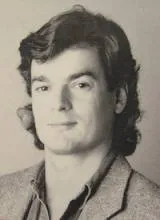
Here's how Michael Hutchison
describes the experience of using mind machines in the
book Megabrain:
You sit down comfortably, don the headgear, flip a switch, close your eyes and
sink into a state of what seems like deep relaxation. A half hour later, as you
turn off the machine, you feel extremely alert and lucid.
Your brain is now functioning more effectively than
it was before. Your memory both your ability to memorize
new information and to recall information you have already
learned has increased dramatically. Your ability to think
creatively, to solve problems, has expanded. The speed with
which your brain cells pass messages among themselves has
increased. In fact, many of your brain cells have actually
grown a microscopic examination would show that the brain
cells have developed more dendrites, the branching filaments
that carry messages from one cell to another, and more synapses,
the junctures between the brain cells across which impulses
are transmitted. You are more intelligent than you were a
half hour before.
Such devices now
exist and are being used by increasing numbers
of people.
So begins Michael Hutchison's book Megabrain ("Mega" derived
from the Greek word for great or powerful).
According to Michael Hutchison “In addition
to the physiological benefits many people report personal
transformations. Some well-known musicians such as Pete Townsend,
Eric Clapton and Keith Richards were treated with CES for
drug addiction. They as well as others report that not only
were they able to get off drugs but they experienced a transformation.
They no longer had addictive personalities.”

The Mind Electric
We have "electric-powered" brains: all our thoughts
and perceptions consist of complex networks of electrical currents
and electromagnetic fields that sweep across the brain. So
it makes sense that electrical stimulation of the brain can
alter your mental state.
The most popular technique for electrically boosting brain power is called
cranial electrotherapy stimulation (CES). Consoles generate
a minute electrical current that flows through pads placed on the earlobes.
Studies have indicated that such electrical currents stimulate the release
of a variety of performance-boosting neurochemicals, including beta-endorphin,
the body's natural pleasure chemical. Scientists speculate that electrical
flows may optimize brain function by "tuning up" the electrical activity
of brain cells.
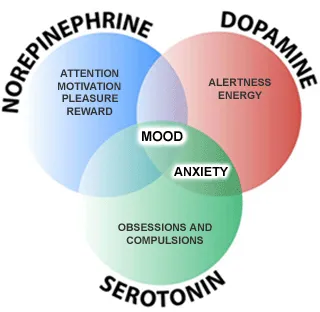
CES units have long been prescribed by doctors for therapeutic
reasons, including the treatment of anxiety, depression, insomnia,
and chemical dependency. Many users have reported that
CES can help them learn to enter a relaxed but alert state
conducive
to high level mental performance that may include increased
memory, concentration IQ and Deep meditative states. As a result,
increasing numbers of healthy people are turning to CES machines
for quick, non-drug relaxation, and as tools for "supercharging" the
brain.
The most ADVANCED CES ever THE
BTPro
It is an exciting time in which we are
living. The age-old polarity between physics and metaphysics
is breaking down. In this integration we have the spiritual
ideal manifesting on the physical plane as well as physical
proof validating the spiritual ideal. Thus philosophy and
science are beginning to embrace the one truth.
In working with and enjoying our new abilities to electronically experience
self-realization we are wise to fall back on a familiar message from ancient
wisdom.
"Trust
your inner knowing."
| |
CES |
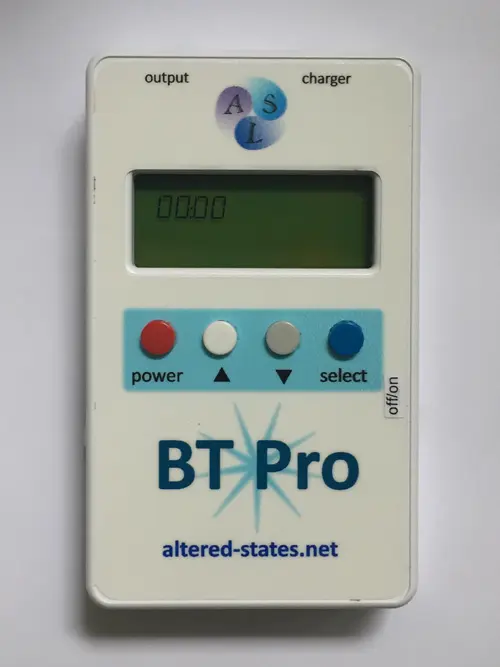 |
BTPro
The most ADVANCED CES
ever
BT Pro Multi system
Full LED screen
Built in frequencies
Delta Brain Waves
0.5 Hz Anxiety release
1.5 Hz Deep sleep
2.0 Hz Healing Of Nerves
Theta Brain Waves
Deep Theta 5.0 Hz Release Brain fog, retain recall
release information faster
7.83 Hz Meditation
Alpha Brain Waves
10 Hz Cell Rejuvenation
More Healing Frequencies
15 Hz Lymph System Circulation
20 Hz Breast lumps
35 Hz Stimulate Clarity of Thought, Mental Function
100.00 Hz Feeling Down
500Hz Chronic depression
1434 Hz White Blood Cell stimulation
1524 Hz Red Blood Cell Stimulation
Plus the Full BT6-BT11 Beck Protocol 1000.00 Hz +
111.00 Hz
Over 700 Natural Harmonic frequencies
Fully Rechargeable ...Batteries/Charger
Timer : 5 - 60 mins
Intensity Control
Very portable
Instructions
High Quality Ear clips
Tens pads and lead
LCD Screen
Many more add on options
|
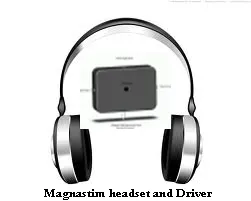 |
BTPro
with PEMF Magnastim head set
Very powerful
 |
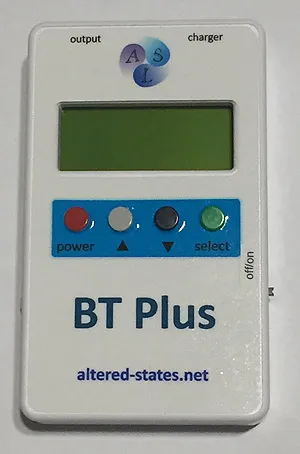 |
BT Plus
Size aprox 2 inches x 3 inches x 3/4 inch or 5 cm
x 7.5cm x 2cm
Power Supply Rechargable Batteries, supplied with Recharger
Timer 10, 20, 60 minutes and continuous
Frequencies 0.5 Hz The 0.5 Hz. setting DELTA brainwave
frequency, normally associated with deep sleep and
release of deeply embedded stress patterns. Pain relief
(temporary) - natural opiates released; lymphatics
assisted Reported Mitosis reduction or inhibition of
rogue cell activity; Stress buster
1.5Hz Pain, Quiet sleep
more
5.00Hz In the Palaces of Memory they suggest 5hz as
being the optimum learning frequency.
Even as you read these words, a tiny portion of your
brain is physically changing. New connections are being
sprouted -- a circuit that will create a stab of recognition
if you encounter the words again Read: In the Palaces
of Memory
Increased DNA synthesis; cellular signalling; repair
and healing
7.83Hz The 7.83Hz ALPHA THETA( border) brainwave frequency
and is associated with a relaxed, but very focused
mental state
100.Hz Feel better, Blast those moods
Plus the Full BT6-BT9-BT11 Frequencies
Current 10 to 600 µA
Waveform Bipolar asymmetric rectangular waves, 50%
duty cycle
Earclips High Quality Ear clips Supplied
Intensity Control 20 Different Steps
Light Weight and fully portable
More information here
|
| |
|
 |
TBSW
Binaural Signal Generator .
24 - 48 hour Download
file sent
complete Software package
There are 21 pre-programmed
Scroll
above to see the TBSW Preset
More
Information Click here
Limited Time Special
- Order Today and Get the $50.00 Off special
 Remember
if you have our Rife
pro package Remember
if you have our Rife
pro package
then you already have a TBSW
generator built in
|
| |
|
|
Experiment
with Mind, Meditation and Psychic frequencies
|

